 The DeMarco Family has been the leading patented innovator in industrial vacuum technology since 1968, but it wasn’t until recently that the vacuum line’s name reflected its inventor, Thomas DeMarco Sr. The current DEMARCO® Vacuum Line is the third generation of industrial vacuums from the DeMarco Family. Each generation of vacuums improved the wet/dry material collection process as the company has always been dedicated to providing their customers with high performance and superior quality products.
The DeMarco Family has been the leading patented innovator in industrial vacuum technology since 1968, but it wasn’t until recently that the vacuum line’s name reflected its inventor, Thomas DeMarco Sr. The current DEMARCO® Vacuum Line is the third generation of industrial vacuums from the DeMarco Family. Each generation of vacuums improved the wet/dry material collection process as the company has always been dedicated to providing their customers with high performance and superior quality products.
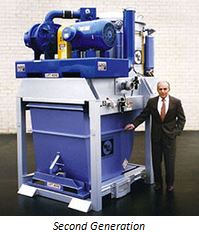 MAX VAC® was the second generation of industrial vacuums from the DeMarco Family. The line was launched in 1986 and revolutionized the vacuum industry with the addition of the Patented DEMARCO® 3-Stage, 2-Compartment Laterally Offset Cyclonic Material Separator Circuit and DEMARCO® Silencer Base® Muffler. The vacuums also implemented the pleated cartridge filter technology for the first time in the industry, an additional feature that enhanced the vacuum’s overall performance and simplicity of design. Overnight, the bag-type vacuum filter became obsolete.
MAX VAC® was the second generation of industrial vacuums from the DeMarco Family. The line was launched in 1986 and revolutionized the vacuum industry with the addition of the Patented DEMARCO® 3-Stage, 2-Compartment Laterally Offset Cyclonic Material Separator Circuit and DEMARCO® Silencer Base® Muffler. The vacuums also implemented the pleated cartridge filter technology for the first time in the industry, an additional feature that enhanced the vacuum’s overall performance and simplicity of design. Overnight, the bag-type vacuum filter became obsolete.
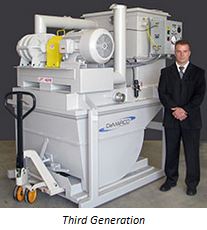 Committing to his father’s innovative spirit, Thomas DeMarco Jr., President and Senior Engineer, improved and enhanced their industrial vacuum line again in 2010. This latest design has more advanced performance features including greater filter efficiency and improved filter air-to-cloth ratio, as well as a new aesthetic low-profile and exclusive compact design. In addition to these new developments, the line was also renamed DEMARCO®. The new vacuum name honors the company’s founder, Thomas DeMarco Sr., the industry pioneer who dedicated his life to the continual improvement of vacuum system technology.
Committing to his father’s innovative spirit, Thomas DeMarco Jr., President and Senior Engineer, improved and enhanced their industrial vacuum line again in 2010. This latest design has more advanced performance features including greater filter efficiency and improved filter air-to-cloth ratio, as well as a new aesthetic low-profile and exclusive compact design. In addition to these new developments, the line was also renamed DEMARCO®. The new vacuum name honors the company’s founder, Thomas DeMarco Sr., the industry pioneer who dedicated his life to the continual improvement of vacuum system technology.
Today, the DeMarco Family, now in its third generation of vacuum engineers, continues to be the innovative leader in the development of superior vacuum designs worldwide.
The DEMARCO® Vacuum can also be customized to work in a wide variety of material collection applications. To learn more, visit the Technology and Performance page today. DEMARCO® – Vacuums Built for Industry™
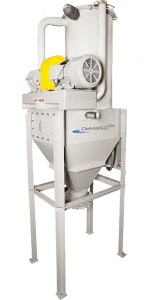 Did you know that for more than 45 years, DEMARCO Vacuums has been a groundbreaking pioneer in the field of advanced vacuuming technology? It’s true.
Did you know that for more than 45 years, DEMARCO Vacuums has been a groundbreaking pioneer in the field of advanced vacuuming technology? It’s true. Modern manufacturing, an essential part of the global economy, has long since left the days of dark and dirty factories, having evolved into sleek, technology-driven environments. Today, manufacturing is at a critical juncture and is again facing a new paradigm shift, according to
Modern manufacturing, an essential part of the global economy, has long since left the days of dark and dirty factories, having evolved into sleek, technology-driven environments. Today, manufacturing is at a critical juncture and is again facing a new paradigm shift, according to 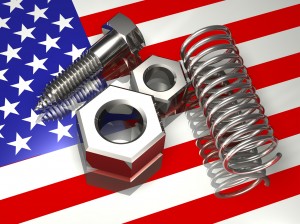 Rising global demand – As the global economy heals, demand for American-made products is picking up. In fact,
Rising global demand – As the global economy heals, demand for American-made products is picking up. In fact, 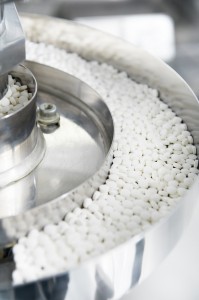 Within all aspects of pharmaceutical manufacturing operations, maintaining a rigorous level of quality assurance is of critical importance. Urging greater focus on contractor quality, the United States Food and Drug Administration (FDA) issued new guidance in May that provides specific strategies for manufacturers to ensure drug quality from third parties.
Within all aspects of pharmaceutical manufacturing operations, maintaining a rigorous level of quality assurance is of critical importance. Urging greater focus on contractor quality, the United States Food and Drug Administration (FDA) issued new guidance in May that provides specific strategies for manufacturers to ensure drug quality from third parties. Innovation is fast becoming a top strategic priority for a majority of companies today. While the notion that innovation drives prosperity is not new, it’s important to remember that innovation should not be considered an end in itself but rather an ongoing process that adds continuous value.
Innovation is fast becoming a top strategic priority for a majority of companies today. While the notion that innovation drives prosperity is not new, it’s important to remember that innovation should not be considered an end in itself but rather an ongoing process that adds continuous value. Beyond a sense of restoring national pride, the recent resurgence of American-made goods makes economic sense again for manufacturers in the United States. Today, as economic conditions drive many overseas manufacturing operations back to the U.S., a new film explores the history of American manufacturing and its impact.
Beyond a sense of restoring national pride, the recent resurgence of American-made goods makes economic sense again for manufacturers in the United States. Today, as economic conditions drive many overseas manufacturing operations back to the U.S., a new film explores the history of American manufacturing and its impact.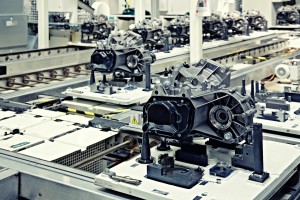 DeMarco Industrial Vacuums like many other manufacturers have a long history of making revolutionary advancements in products and processes to improve efficiency, quality and safety. In an effort to showcase innovation in manufacturing, over the coming year, we will be highlighting companies that are making strides to increase innovation, quality, and productivity.
DeMarco Industrial Vacuums like many other manufacturers have a long history of making revolutionary advancements in products and processes to improve efficiency, quality and safety. In an effort to showcase innovation in manufacturing, over the coming year, we will be highlighting companies that are making strides to increase innovation, quality, and productivity. The Rolls-Royce@NTU Corporate Lab is located at Singapore’s
The Rolls-Royce@NTU Corporate Lab is located at Singapore’s  Yet labor costs are only part of the picture, according to
Yet labor costs are only part of the picture, according to